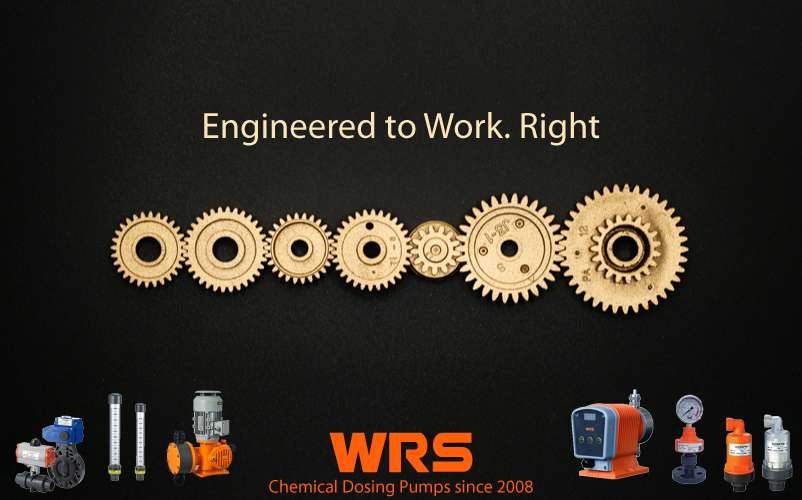
A dosing pump is a displacement instrument that is used to pump a known, predetermined, and very specific amount of liquids including chemicals into either fluid, a gas or steam flow or a body of water. Control of the flow rate is also an important part of the dosing process itself, and this is determined by many factors such as the nature of the liquids, chemicals and water being treated and the purpose of treatment.
The primary function of a dosing pump is that of a chemical delivery system and this is done with a high level of accuracy.
A predetermined amount is first drawn into a chamber, and then through pipes leading to the tank or water storage unit, transferred back into required form of the liquid. Even though it carries out an enormous task, dosing pumps in themselves are rather small devices which can be operated either with (Electric, Air Operated Diaphragm Pump, Motor or Solenoid Driven chemical dosing pumps or basic actuator).
Most dosing pumps are controlled by an external control system but some have regulation switches inside them which can specify the flow rate. The newer models of dosing pumps that are available have a range of options that make the device very easy to operate. There are monitoring systems available inside modern dosing pump models such as ones to indicate low product levels, alarms, time-specific on/off buttons, and timely warnings.
The Mechanics of a Dosing Pump
The dosing pump is made up of several parts, with all of them being integral to the end function. These parts connect with the dosing pump itself to complete the task of metering. The first part is a chemical tank where the chosen chemical to treat the fluid / water is stored. The tank needs to be continually filled according to requirements, and there are valves that indicate how much product remains. Below diagram shows the basics of a dosing system.

The second important component is the foot valve that is usually connected with the suction line. The suction line allows the delivery of the product from the tank to the dosing pump head. It is found either at the bottom of the holding tank or a floating switch is attached to it so an alarm can go off if product levels are running low.
The dosing pump is normally manufactured from chemical resistant material (PVC, Stainless Steel, PVDF). But pumps made from rubber can also be purchased and used for low-level basic metering tasks. The exact specifications of a pump can vary, but most have a suction line and a dosing line to keep the product moving according to the measurements specified.
The dosing line itself is typically a stiff one but can be made from various materials such as PE, PVDF or PVC. However, if the product has to be pumped into steam, boiling water at high temperatures, then the line or pipe used must accommodate the setup such as heat treated metal pipes. The line is adjustable for air relief and pressure relief in most modern models.
WRS ML & ML-S dosing pump models is a microprocessor-controlled solenoid diaphragm type dosing pump. Because there is only one moving part, the drive is virtually wear-free. The pump requires no lubricated bearings or shafts, the maintenance and repair costs are therefore very low. The MLS model Solenoid Driven Chemical Dosing Pump has an additional plug for pulse signal or 4-20mA signal.
Another important aspect is the injector point which stands between the pump dispensation and the actual water flow being treated. After the product is dosed into the liquid / water successfully; the dosing line is sealed off with a valve. This is done to prevent any back-flow of the chemical back into the tank.
A control system exists to monitor different aspects such as timers and flow switches to make sure everything is running smoothly. Sensors for pH or chlorine also exist in a metering system and the options depend on the type of chemical dosing system required.
More Than Just a Chemical Dosing Pump Supplier
There are many different ways to setup chemical dosing systems, and yet, at the heart of all operations is the amount of liquids and the rate at which you want the dosing system to work.
Got any questions related to chemical dosing systems? Manufacturing Chemical Dosing Pumps since 2008, WRS has been serving over 50 countries worldwide, this means we can answer all your questions and provide professional expert advice when it comes to metering pumps and chemical dosing. Speak with our industry experts who are ready to answer all your questions Contact WRS here
